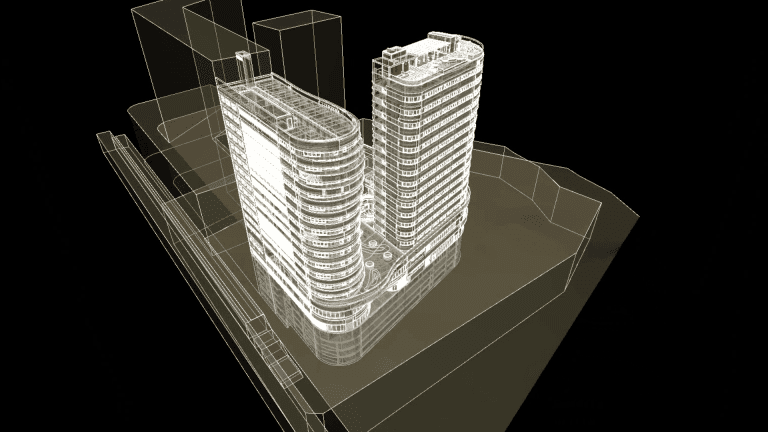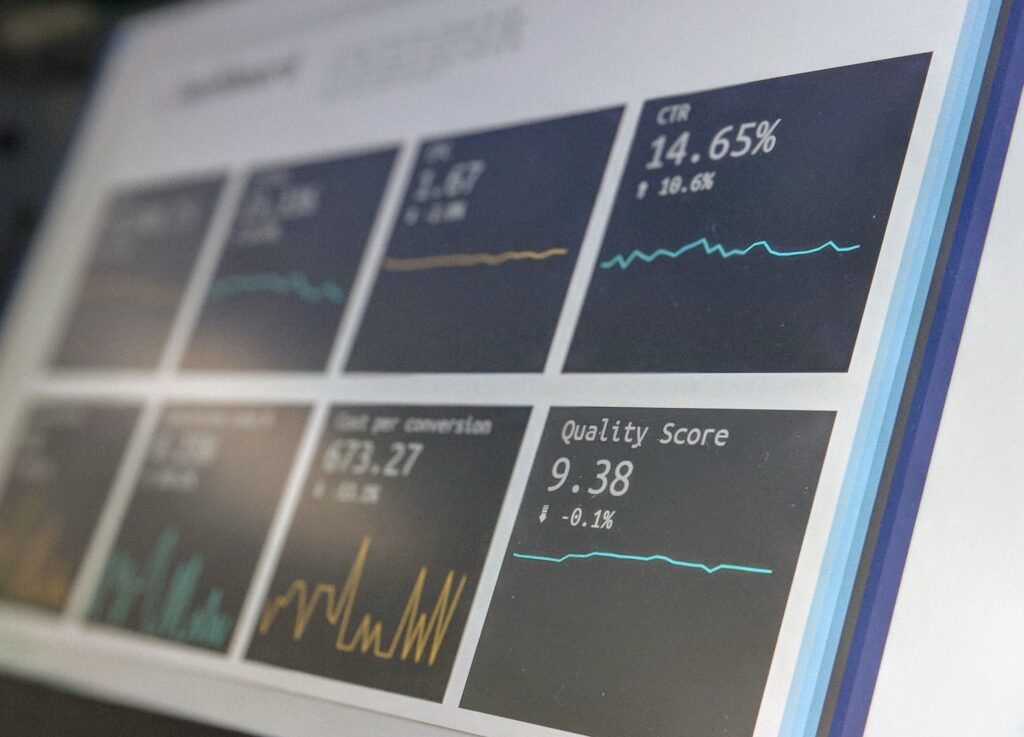OWNERS
BIM CONSULTING
Maximize the benefits of Building Information Modeling (BIM) in your construction projects with our specialized consulting.
We help the owners of technical facilities or buildings to define BIM strategies, evaluate capabilities, support in the selection of qualified teams and suppliers, in the launching of tenders or hiring, in the implementation of a BIM methodology, and in the management of information throughout the life cycle of your building.
Contact us to learn more about our BIM consulting services for owners.
- Detailed review of BIM models.
- Verification of the structure of the models and the relationships between the elements.
- Compliance with interoperability norms and standards.
- Evaluation of consistency and accuracy of data in models.
- Analysis of compatibility and interoperability of models with other software.
- Verification of regulatory and legal compliance of models.
- Evaluation of the visual and aesthetic quality of the models.
- Elaboration of audit reports with observations, nonconformities and recommendations.

BIM MODELING
survey, project, scan
BIM modeling is the creation of a 3D digital model of the building or structure that includes all the necessary information for design, construction and future management.
The BIM modeling process can include surveying existing conditions, architectural and specialty design, digitalization by scanning existing buildings, among other stages.
The BIM modeling team uses BIM software to create the 3D model, including information about each construction element, such as dimensions, materials, technical specifications, among others.
The BIM model is then used for simulations, analyses, and to generate documentation for the construction and operation of the building.
- Detailed review of BIM models.
- Verification of the structure of the models and the relationships between the elements.
- Compliance with interoperability norms and standards.
- Evaluation of consistency and accuracy of data in models.
- Analysis of compatibility and interoperability of models with other software.
- Verification of regulatory and legal compliance of models.
- Evaluation of the visual and aesthetic quality of the models.
- Elaboration of audit reports with observations, nonconformities and recommendations.

BIM MANAGEMENT
BIM process management or BIM Management involves overseeing and coordinating the use of BIM throughout the project, from conception to construction and post-construction.
The goal is to ensure that the entire project team works collaboratively and uses best BIM practices to produce accurate models, avoiding conflicts and reducing errors and corrections.
The BIM process manager (BIM Manager) is responsible for coordinating the project’s progress concerning the BIM objectives set by the owner and ensuring that BIM deliverables meet the project’s standards and requirements.
- Detailed review of BIM models.
- Verification of the structure of the models and the relationships between the elements.
- Compliance with interoperability norms and standards.
- Evaluation of consistency and accuracy of data in models.
- Analysis of compatibility and interoperability of models with other software.
- Verification of regulatory and legal compliance of models.
- Evaluation of the visual and aesthetic quality of the models.
- Elaboration of audit reports with observations, nonconformities and recommendations.

BIM AUDIT
BIM audit is a process of reviewing the quality and integrity of BIM models and deliverables.
The team of BIM specialists assesses the quality of the model, checking its compliance with quality standards, its accuracy, and the integration between different models.
BIM audit also includes reviewing BIM collaboration processes to ensure that models and information are shared correctly and updates are properly recorded.
- Detailed review of BIM models.
- Verification of the structure of the models and the relationships between the elements.
- Compliance with interoperability norms and standards.
- Evaluation of consistency and accuracy of data in models.
- Analysis of compatibility and interoperability of models with other software.
- Verification of regulatory and legal compliance of models.
- Evaluation of the visual and aesthetic quality of the models.
- Elaboration of audit reports with observations, nonconformities and recommendations.

CONSTRUCTABILITY ANALYSIS
BIM constructability verification is a process that uses the BIM (Building Information Modeling) methodology to analyze the feasibility of a project’s construction.
It aims to identify potential construction problems and incompatibilities between different building elements, such as structure, electrical installations, plumbing, among others.
Through the use of specialized software, we can digitally visualize the construction in three dimensions, in a detailed and precise manner. This allows us to identify possible interferences between elements, such as pipes passing through beams or columns, for example.
BIM constructability verification helps avoid errors and corrections during construction by enabling a thorough analysis of the adopted technical solutions. With this approach, it is possible to anticipate problems and make necessary adjustments even before the start of construction, reducing costs and timelines, as well as increasing the quality and efficiency of the construction process.
BIM constructability verification is a tool that allows for prior analysis and detection of potential construction problems, optimizing the construction process and contributing to the efficiency, economy, and success of the project.
- Detailed project review, analyzing each component of the building.
- Use of BIM software to create a three-dimensional model of the construction.
- Verification of interferences and incompatibilities between project elements.
- Structural analysis to ensure adequate strength and sizing.
- Analysis of electrical, plumbing, and other systems installations.
- Verification of compliance with accessibility standards.
- Evaluation of the overall constructability of the project.
- Preparation of reports with observations, recommendations, and identified solutions.

BUILDING PROJECTS
Do you want to develop a project using the BIM methodology, but still don’t have a project team?
ConcepsysBIM was born from a company with over 20 years of experience in different project areas, providing coordinated projects, always using the BIM work methodology.
Learn more about concepsysARQ

Advantages
- Reduction of investment risks by making the path to the final goal clearer for all stakeholders;
- Minimization of coordination problems;
- Prevention of errors and delays in projects and works;
- Reduction of financial risk in relation to reliable cost estimates and reduction of the number of project change requests;
- Support for decision-making;
- Initial project evaluation as a way to ensure that previously established requirements are met;
- Simulations for building performance evaluation and its maintenance;
- Better project marketing by effectively using 3D images and animations;
- Better understanding of proposed drawings and specifications;
- Complete and integrated information about the building and its systems in one place;
- Integration of technical data sheets of installed products within the BIM model ready for Facility Managers;

Frequently Asked Questions
BIM contracting support is the process of using the BIM methodology to support the contracting phase of a construction project. During this process, various actions are taken to ensure efficient and informed contracting. Some examples of these actions include:
1. Document preparation: Develop contracting documents that include specific requirements and guidelines for BIM implementation in the project.
2. Specification of criteria: Define clear and objective criteria for evaluating proposals from potential contractors regarding BIM use, such as model detail level, interoperability, and coordination.
3. Assessment of BIM competencies: Evaluate the competencies and experience of potential contractors concerning the BIM methodology, verifying if they have the technical capacity and resources necessary to meet the project’s requirements.
4. Review of model samples: Analyze samples of BIM models developed by potential contractors to assess the quality, consistency, and level of detail achieved.
5. Definition of contractual obligations: Establish clear contractual obligations related to BIM use, including model delivery, information exchange, and coordination with other disciplines.
6. Information management: Ensure that information management processes are well-defined, including data structure and information exchange requirements in BIM format.
7. Negotiation of contractual terms: Negotiate contractual terms related to BIM use, including the responsibilities of the parties involved and quality assurance clauses.
8. Supervision and monitoring: Monitor BIM implementation during the contract execution phase, ensuring compliance with contractual obligations and the quality of models and information.
BIM contracting support aims to ensure that the contracting process is conducted in an informed and efficient manner, considering the specific requirements and benefits of the BIM methodology. This helps ensure effective collaboration among the parties involved and the proper use of BIM technology throughout the construction project.
BIM modeling is the process of creating and developing three-dimensional virtual models that represent a building or infrastructure. During BIM modeling, several actions are performed to create an accurate and comprehensive BIM model. Some examples of these actions include:
1. Model creation: Use BIM software to create the three-dimensional model of the building, adding elements such as walls, floors, ceilings, doors, windows, structures, mechanical systems, among others.
2. Property Assignment: Enter information and assign properties to model elements, such as materials, dimensions, physical properties, and technical information.
3. Coordinate the elements: Ensure that the elements of the model are correctly spatially coordinated, avoiding interferences and incompatibilities between the different disciplines.
4. Geometric representation: Create accurate geometric representations of the model elements, respecting the dimensions, shapes and actual geometry of the building or infrastructure.
5. Information Integration: Insert additional information into the model objects, such as costs, lead times, energy performance data, maintenance, and technical documentation.
6. Analysis and simulation: Use the BIM model to perform analysis, simulations, and visualizations, such as structural analysis, energy analysis, lighting simulation, and 3D design visualization.
7. Multidisciplinary collaboration: Working together with the different disciplines involved in the project, sharing and exchanging information and updating the model as the project progresses.
8. Updating and revising the model: Keep the BIM model updated as changes and updates occur in the project, ensuring that the model faithfully reflects the reality of the construction.
BIM modeling aims to create a complete and accurate digital model that serves as a virtual representation of the building or infrastructure, enabling detailed visualization, analysis, and efficient collaboration between the different disciplines and stakeholders involved in the project.
BIM management is a process that involves the coordination and administration of the use of BIM methodology in a project or organization. During BIM management, several actions are taken to ensure the effectiveness and efficiency of BIM implementation. Some examples of these actions are:
1. Planning and strategy: Define the objectives and goals of using BIM, establish a strategy for its implementation, and plan the necessary activities and resources.
2. Team and resource management: Manage the team involved in the BIM project, assign responsibilities and define resource allocation, including necessary hardware, software and training.
3. Development of protocols and standards: Define the protocols and standards to be followed in the creation and exchange of information in BIM models, ensuring consistency and interoperability among the different disciplines.
4. Coordination and collaboration: Facilitate communication and collaboration among the different disciplines and stakeholders involved in the project, promoting information exchange and efficient conflict resolution.
5. Implementation of technologies and tools: Identify and implement the appropriate BIM technologies and software tools to meet the needs of the project and the organization.
6. Quality management: Establish quality control processes to ensure the accuracy, integrity, and reliability of BIM data and models throughout the project.
7. Training and capacity building: Promote training and capacity building for the team involved, aimed at acquiring the skills and competencies necessary for the effective use of BIM.
8. Monitoring and evaluation: Perform ongoing monitoring of BIM project progress, evaluating performance and identifying opportunities for improvement.
9. Information Management: Develop and implement strategies for the efficient management of the information contained in BIM models, including the storage, organization, access, and use of information throughout the construction life cycle.
BIM management aims to ensure the effective planning, implementation, and use of BIM in a project or organization, promoting collaboration, efficiency, and quality in the delivery of undertakings.
BIM audit is a process conducted to assess the quality and compliance of models and information contained in a BIM project. During this audit, various actions are executed:
1. Review of BIM models: The models are analyzed in detail to verify if they are complete, consistent, and up-to-date. The information inserted in the objects, their correct classification, and property assignment are evaluated.
2. Verification of model structure: An analysis of the BIM model structure is conducted to ensure the correct organization of elements and components. Hierarchical relationships and connections between objects are checked for adequacy.
3. Compliance with norms and standards: The models are checked for compliance with specific norms and standards. This includes interoperability requirements, such as adherence to information exchange standards like IFC (Industry Foundation Classes).
4. Evaluation of data consistency and accuracy: The data contained in BIM models are evaluated for their consistency and accuracy. This includes checking if the information is correct, up-to-date, and reliable.
5. Analysis of compatibility and interoperability: The compatibility of BIM models with other software used in the project is verified. Interoperability between different disciplines is also assessed, ensuring proper integration of models.
6. Verification of regulatory compliance: The models are analyzed to ensure they meet applicable regulations, technical standards, and legal requirements.
7. Evaluation of visual and aesthetic quality of models: In addition to technical aspects, an evaluation of the visual and aesthetic quality of BIM models is also conducted. This includes verifying if the graphical representation is adequate and if the elements are visually appealing.
8. Preparation of audit reports: At the end of the audit, detailed reports are prepared, highlighting observations, non-conformities found, and recommendations for improvements.
The goal of BIM audit is to ensure the quality, consistency, and compliance of project models and information, ensuring that BIM use is efficient and effective in all phases of the enterprise.
During constructability analysis, several actions are taken to evaluate the constructability of a project. Here are some of the main actions included in this process:
1. Project review: The professionals involved analyze in detail the architectural, structural, electrical, hydraulic, and other related projects, identifying the elements and components that compose the building.
2. BIM Modeling: Using BIM software, a three-dimensional model of the building is created, integrating all the disciplines involved. This allows detailed visualization and analysis of each element of the construction.
3. Interference checking: The BIM model is used to identify interferences and incompatibilities between design elements. Overlaps, conflicts between pipes, structure and other elements are checked, aiming to eliminate possible problems before execution.
4. Structural analysis: The building structure is analyzed, checking its resistance, adequate dimensioning, positioning of beams, pillars, slabs, among other structural elements.
5. Analysis of installations: Electrical, plumbing, air conditioning and other installations are checked for sizing, layout and connections, ensuring that they comply with applicable standards and regulations.
6. Accessibility analysis: It is verified if the building complies with the accessibility norms, analyzing the disposition of ramps, handrails, elevators, doors, and other elements that guarantee accessibility to people with reduced mobility.
7. Constructive feasibility analysis: Based on the previous analyses, the constructive feasibility of the project as a whole is evaluated. Possible difficulties, risks, and adjustment needs are identified to ensure proper constructability.
8. Reporting: At the end of the analysis, detailed reports are prepared with the observations, recommendations and solutions to the identified problems. These reports serve as a basis for construction planning and guide the professionals involved.
These are just some of the actions performed during the constructability analysis. The process can vary depending on the project and the specific needs of each enterprise.
In the context of BIM (Building Information Modeling), dimensions refer to the different levels of detail and information contained in BIM models. These dimensions are often referred to as 3D, 4D, 5D, 6D, and 7D, each adding an additional layer of information and functionality to the model. Here is a short description of each dimension:
1. 3D (Geometry): The 3D dimension refers to the three-dimensional representation of the building elements in the BIM model. This includes geometry, shape, size and positioning of the objects.
2. 4D (Time): The 4D dimension adds the variable of time to the BIM model. It allows you to create simulations and visualizations that demonstrate the evolution of construction over time, such as construction sequences and schedule planning.
3. 5D (Cost): The 5D dimension involves incorporating cost information into the BIM model. This allows you to quantify and calculate cost estimates based on the model elements, facilitating financial and budgetary management of the project.
4. 6D (Sustainability): Dimension 6D addresses the sustainability and energy performance of the project. It allows the inclusion of data related to energy efficiency, resource use, and environmental impact, helping to make sustainable decisions during the life cycle of the building.
5. 7D (Operations and Maintenance): Dimension 7D is related to the management of construction operations and maintenance after project completion. It involves the inclusion of information relevant to asset management, such as manuals, technical documentation, maintenance plans, and warranty information.
These dimensions of BIM enable a more comprehensive and integrated approach to the design, construction, operation and maintenance of a project. They provide a greater level of detail and relevant information for the different stakeholders involved throughout the construction life cycle.
